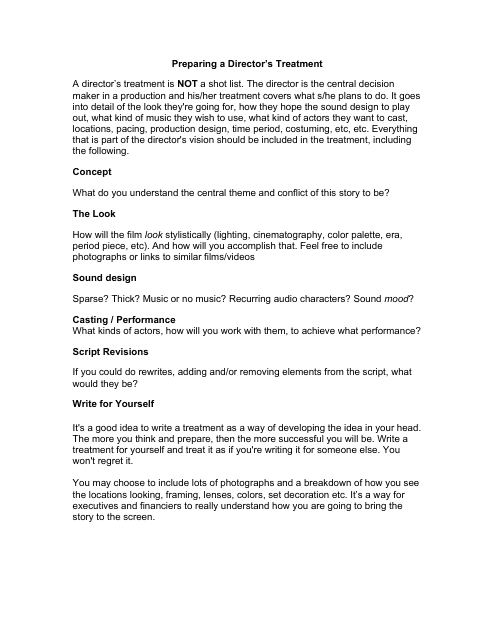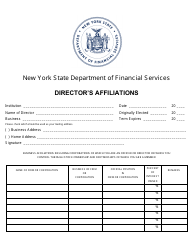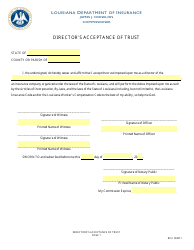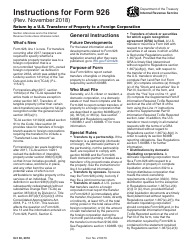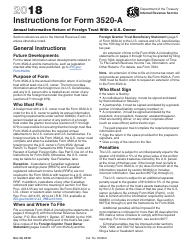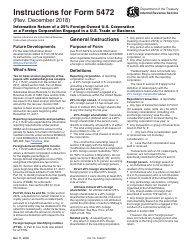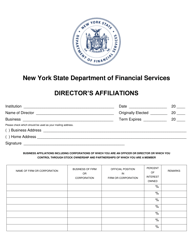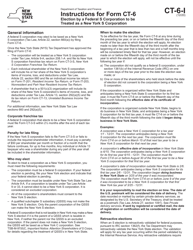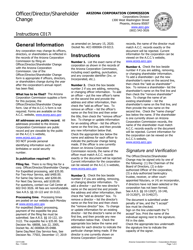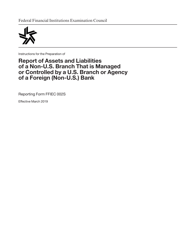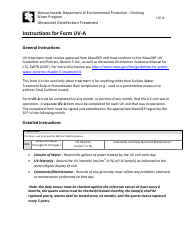Instructions for Preparing a Director's Treatment
Instructions for Preparing a Director's Treatment is a document that provides guidance and directions to filmmakers on how to create a written proposal or outline for a potential film. It outlines the key elements and essential information that should be included in the treatment to effectively pitch a movie idea to producers or investors.
FAQ
Q: What is a director's treatment?
A: A director's treatment is a document that outlines the director's creative vision and approach for a film or video project.
Q: Why is a director's treatment important?
A: A director's treatment helps to communicate the director's vision to potential stakeholders, such as producers and investors.
Q: What should be included in a director's treatment?
A: A director's treatment should include a summary of the project, the director's stylistic and visual approach, the intended target audience, and a description of the key characters and story.
Q: How long should a director's treatment be?
A: Ideally, a director's treatment should be concise and to the point, typically around 5-10 pages.
Q: Who typically writes a director's treatment?
A: The director or a hired writer typically writes a director's treatment.
Q: Can a director's treatment be used for any type of project?
A: Yes, a director's treatment can be used for various types of projects, including films, commercials, music videos, and more.
Q: Is a director's treatment legally binding?
A: No, a director's treatment is not legally binding. It serves as a creative proposal and guide.
Q: Can a director's treatment be revised?
A: Yes, a director's treatment can be revised based on feedback or changes in the project's development.
Q: Who typically reads a director's treatment?
A: Producers, investors, and other key decision-makers in the project's development process typically read a director's treatment.
